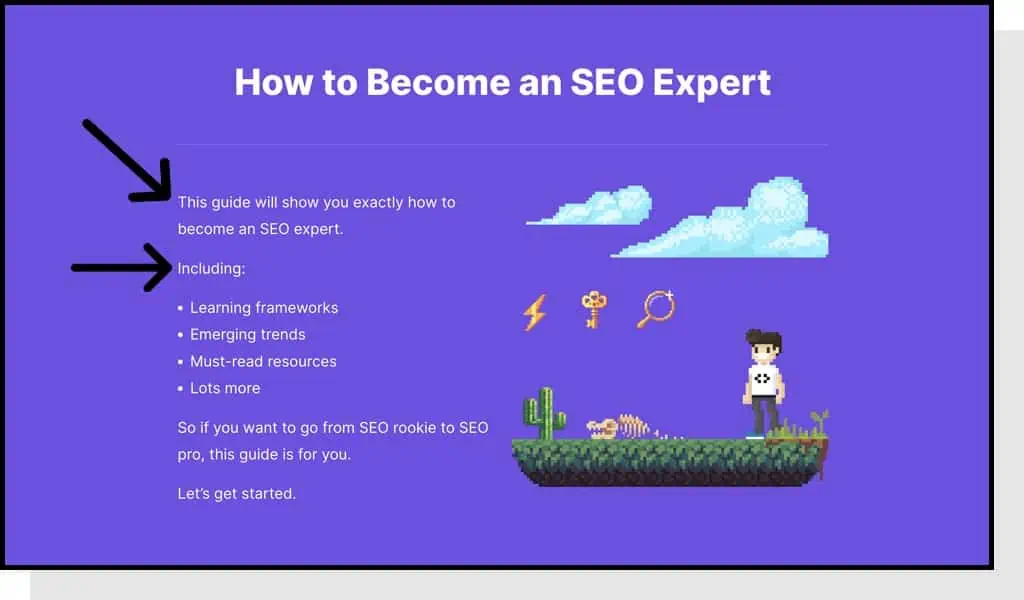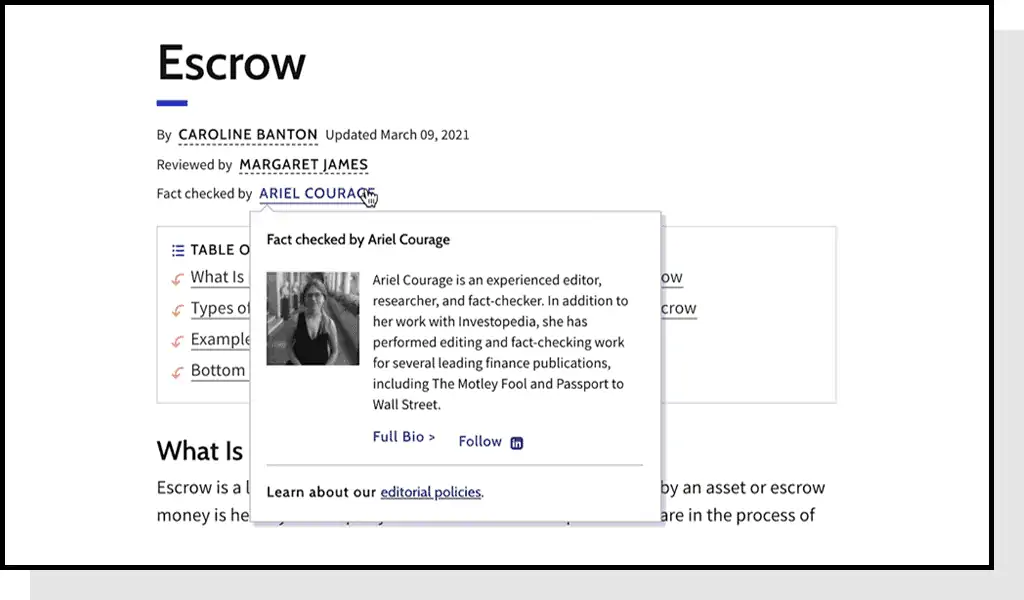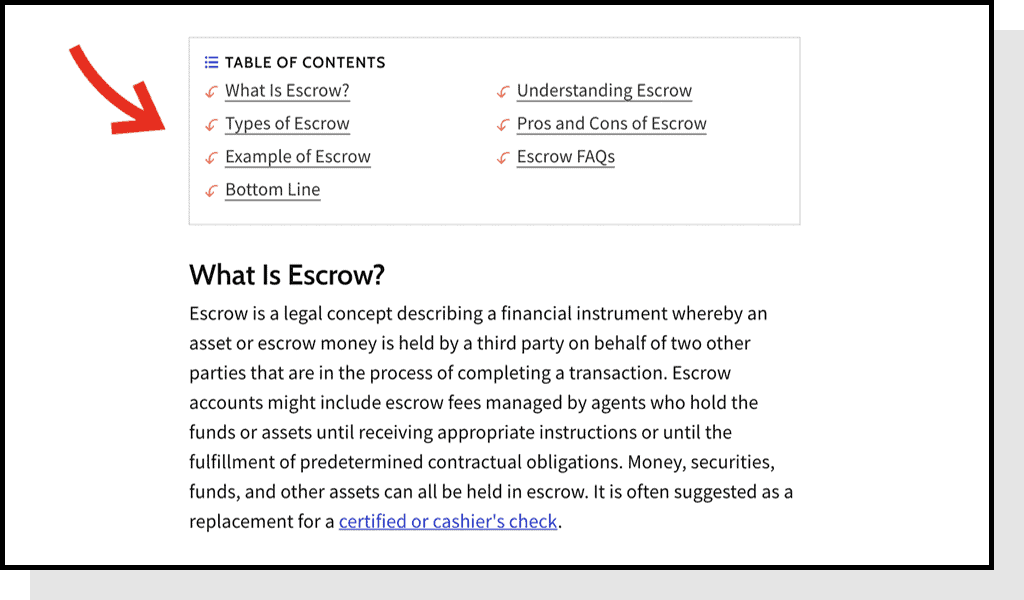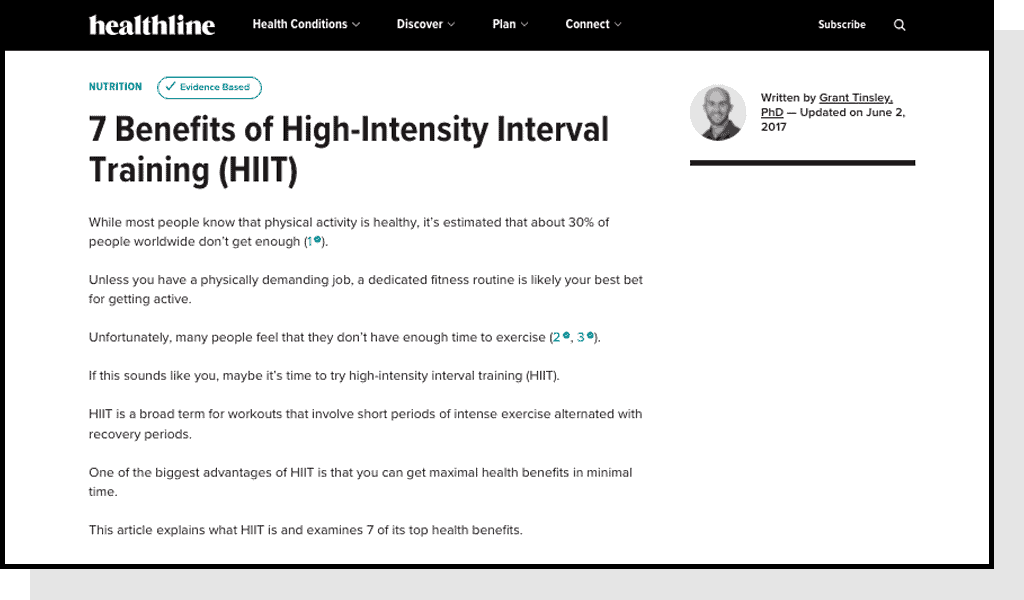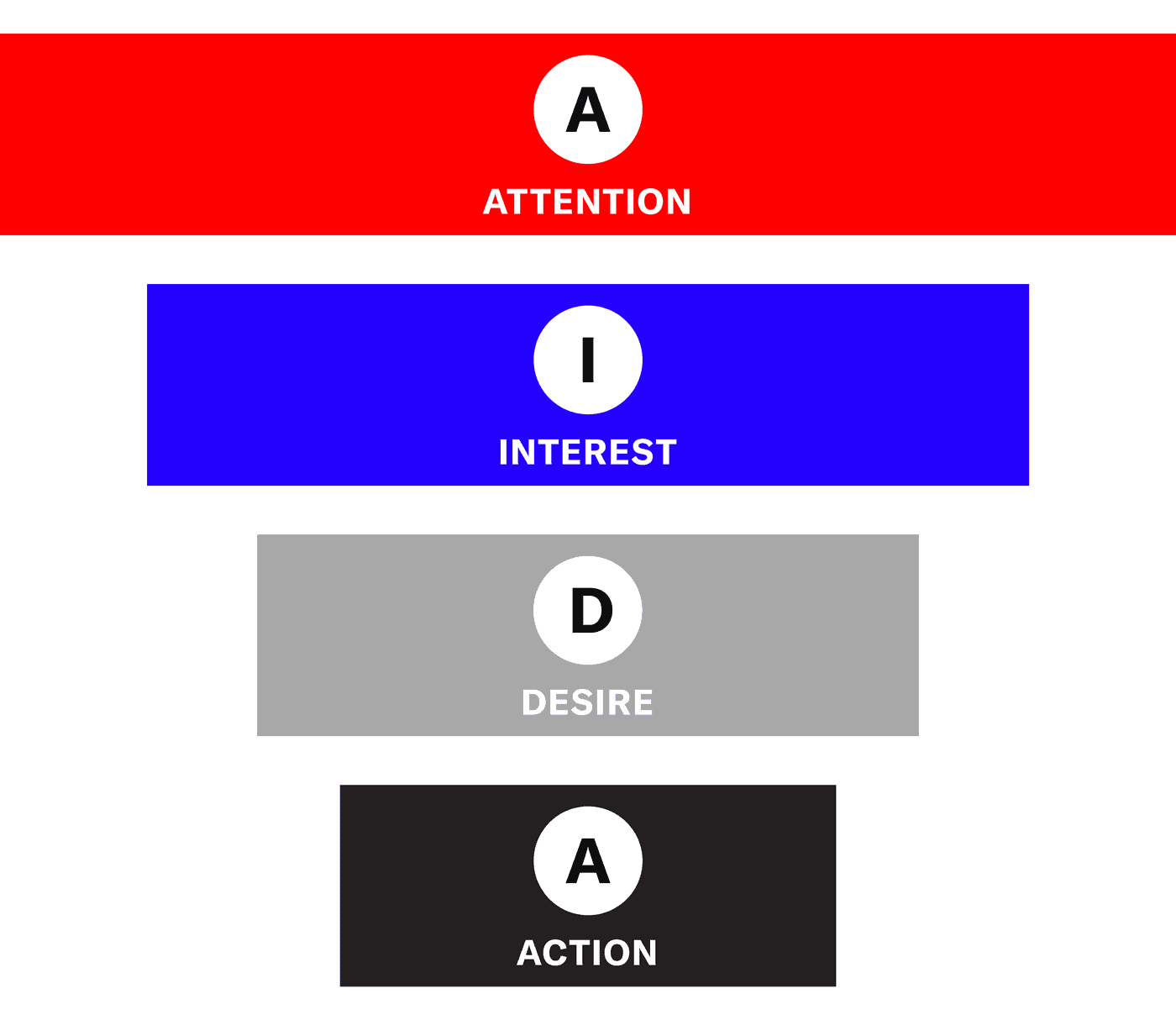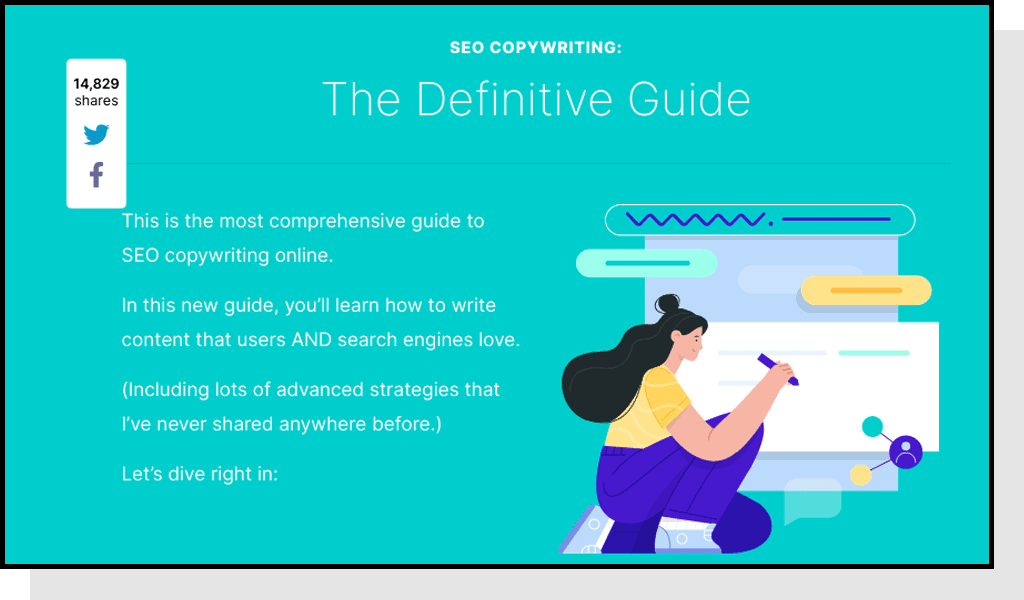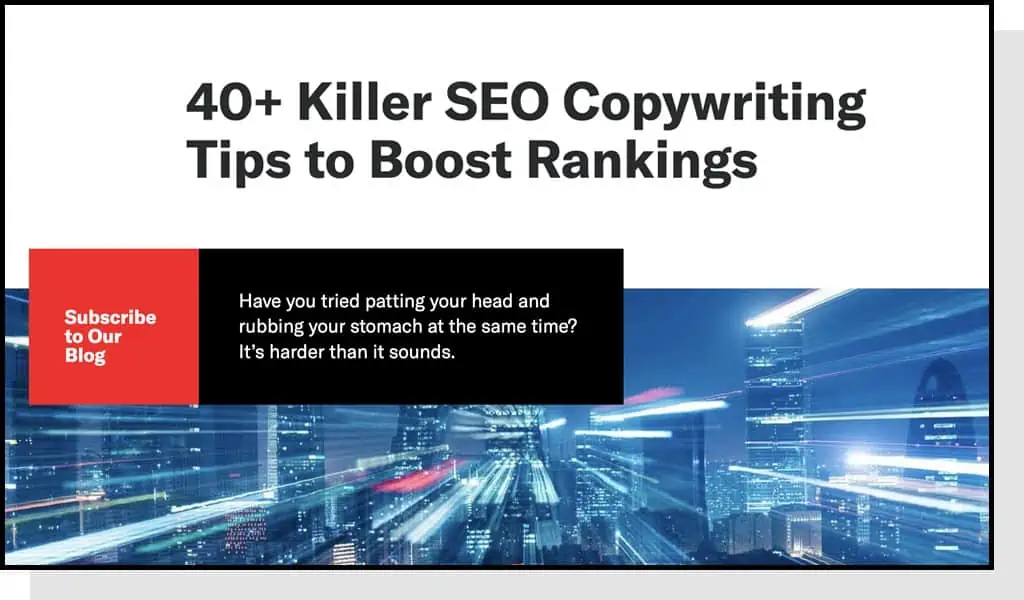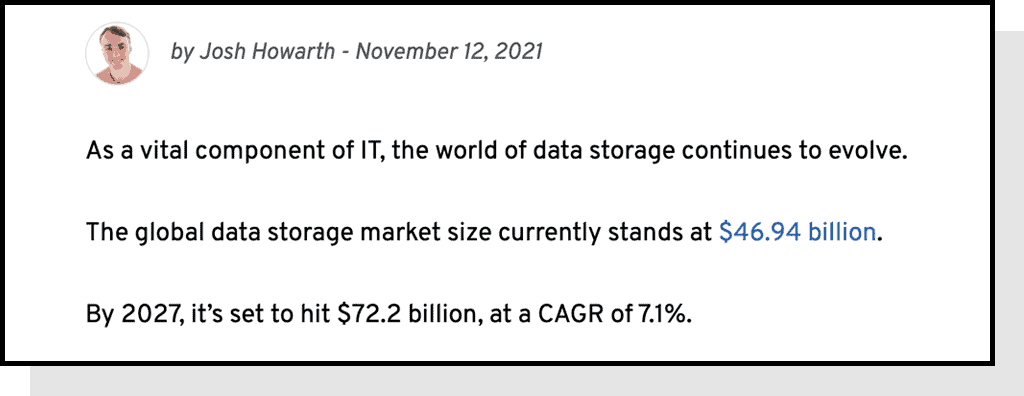One of the best performing websites on the web, Backlinko.com, consistently uses the “Preview Proof Benefit” (PPB) blog introduction formula to generate 541,000 visits/month in a highly competitive vertical.
Siege Media is a content marketing agency that works with some of the world’s best companies. We’ve seen (and written) great copywriting time and time again, and we always end up coming back to the PPB formula as a method of creating content that drives attention and ranks.
In this post, we’ll break down how the formula works for websites that drive millions of visits a year, show examples of it in action for pages that rank for extremely competitive queries, and also show how to take it a different direction when it feels a little less relevant to your business.
What is the PPB Formula?
The Preview Proof Benefit (PPB) formula is a blog introduction copywriting formula for consistently grabbing the reader’s attention, driving time on site and indirectly improving your rankings and conversions because of it.
Usable in any order, the Preview shows the reader what they can expect in the article to come that should make them stick around.
The Proof is stating the credibility that proves that you and/or your company are someone they should listen to for this advice.
The Benefit is what the reader will gain from reading your article, that is often combined with the preview section.
If you consistently include these three elements in every introduction, your readers will end up significantly more likely to stick around.
Blog Introduction Examples
How to Become an SEO Expert
As mentioned, Brian is the go-to source for everything copywriting as he utilizes the PPB formula on almost every post.
Here, he breaks down the Benefit by saying “This guide will show you exactly how to become an SEO expert.”. His Preview reveals the specific elements his post will have (that also differentiates it), including frameworks, trends and must-read resources.
Finally, his Proof is that he himself ranks #1 for very competitive keywords such as “Google Ranking Factors”. That’s something you’d love to see from someone teaching you to become an SEO expert.
How to Create a Great Website
This is a website most won’t have heard of, so establishing Proof early with “I’ve been a website developer for more than 14 years” is vital to maintain the readers’ trust.
The Preview is that you’ll be able to create a website within 20 minutes, for less than a cup of coffee. That’s compelling for most!
Finally, the Benefit is that you’ll learn 20 ways to make money from a blog in addition to the previously mentioned benefits of this process being fast and cheap.
How to Start a Blog
Adam Enfroy breaks down the process he follows to start a blog, immediately dropping the Preview in that you will be able to do this via seven easy steps.
His Proof/Benefit, a section often intertwined, is that he has built a blog that generates over one million in revenue and reaches 500,000 monthly visitors – and he’ll show you exactly how to do that too.
What is an Escrow?
To take this a completely different direction, it’s worth noting that you can sometimes accomplish PPB without actually writing most of it into a paragraph.
Above, Investopedia gives Proof via the author bio of their writer, Ariel Courage. This is easily viewed on hover and generates the credibility the reader is looking for.
Second, the table of contents in-body immediately gives users a Preview of what’s to come, and allows them to also quickly get it, too.
Finally, the Benefit is seen via the immediate definition of the keyword the user is looking for, “What is Escrow?”
How to Plan a Wedding
The New York Times also takes a unique approach to PPB. They are the New York Times, so given that they have immediately generated Proof that we are someone they should trust.
Not many of us have this immediate user credibility, so we should proceed as if we don’t.
The Preview and Benefit for the Times is that the post will give you a 12-month timeline to help visualize what you need to do, when to do it, and when to just say “screw it”. That’s a compelling sentence for any person planning a wedding.
How to Build an Email List
Brian is the go-to for this, so it’s only right that we show several examples he’s created. Here, his Preview is that he’s going to show us how to build an email list.
His Benefit is that he’s going to do it FAST.
And his Proof is that these strategies helped him grow his list from scratch to 170,000+ subscribers.
Benefits of HIIT
Healthline accomplishes Proof through their author bio on the right referencing their PhD background.
They take a unique approach to Benefit through referencing science-backed studies of the benefits of high intensity interval training, and also tying in “that the advantages of HIIT is that you can get maximal health benefits in minimal time”.
The Preview is that the article will explain what HIIT is, and also break down seven of its top benefits.
Healthline is a unique, scientifically-rigorous brand. They can’t write intros like Brian Dean, but they still manage to write compelling intros within the context of what makes them them.
How to Write a Great Blog Intro
Outside just PPB, there are a few more tips to writing high-performing introductions that every writer should consider.
1. First Line, Second Line.
We’re big believers in the Attention, Interest, Desire, Action model here at Siege. As part of that, the goal is to write a first line that is so compelling it forces the reader to get to the second.
And from there, a second line that’s just as good as the first, that draws the reader into the third. And then the fourth, and so on and so forth (fifth) until you get to the call to action.
Dave Gerhardt, an amazing copywriter himself, turned us on to the idea of first line, second line. He’s someone every aspiring writer should follow.
2. Compliment the Headline
In a perfect world, your first sentence feels like a continuation of the story started by the headline. What matters most about your post that you couldn’t put in the title, but is the next-biggest element that makes it credible?
3. Tell a Mini-Story
People love stories, but you don’t have a lot of room to tell them.
Telling a compelling story in 4-5 sentences is one great way to hook people and get them to read further.
4. Restate the Keyword + Solve for Quick Answers
For SEO best practice (and user experience), you should include the top keyword at least once in the intro.
Avoid using it multiple times (or overusing in the article) as that may be counterproductive to ranking. Do what feels right for the user.
Additionally, if your keyword is a question with a short answer – such as “What is the Atkins Diet?” your goal is to solve for that almost immediately.
Our guidance would be to go with “KEYWORD is..” immediately after the header that states the keyword to make it easy for robots, and users to extract meaning and find what they’re looking for.
In the above example, Healthline does both, restating the keyword and solving for that keyword that is a variant for this topic.
5. Lead with Data-Backed Benefits
As an element of Proof, one way you can get around not being a PhD is referencing people and studies from people that are equivalent.
Healthline does a consistently good job of this, referencing health studies and published papers that support each article.
Additionally, statistics are compelling and often function as the “First Sentence, Second Sentence” attention part of the equation if you can pull in the right data point to support moving on to the next part of your article.
This is the Least Important Part
The blog post introduction is arguably as important as the title, and if not it’s a very close second. Many people don’t spend enough time on titles, and after that, many people don’t spend enough time on blog introductions.
Hopefully this guide was a helpful starting point for going deeper on writing more effective introductions.
And if you decide writing introductions aren’t for you, our content creation services might be the next-best thing.


